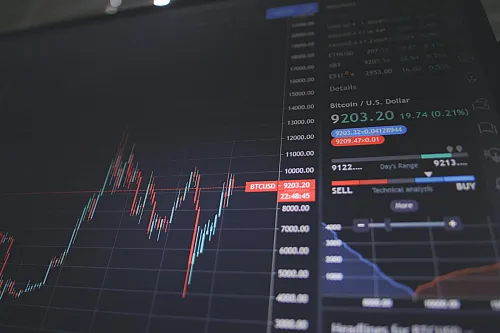On 6 January 2024, Decree-Law 4/2024 of 5 January (Decree-Law 4/2024), which establishes the voluntary carbon market in Portugal and sets out rules for its operation, entered into force.
The legislation aims to encourage the participation of various players in this market (individual and organisational, public and private), whether on the supply side, through the promotion of projects to reduce greenhouse gas emissions (GHG) or carbon sequestration that generate carbon credits or, on the demand side, by creating a legal and technical framework that allows individuals and organisations to acquire these credits for different purposes.
The voluntary carbon market thus creates, regulates, monitors and supervises a legal and technical framework that allows the accounting, registration, issuance and consequent transaction and cancellation of certified carbon credits, with the aim of mitigating GHG emissions in Portugal.
What are carbon credits?
Reductions in GHG emissions or carbon sequestration obtained through projects registered under the voluntary carbon market create carbon credits:
- The reduction of GHG emissions relates to an amount of avoided carbon dioxide equivalent (CO2e);
- Carbon sequestration corresponds to the removal of carbon dioxide (CO2) from the atmosphere and its long-term, biological and technological storage.
Each ton of CO2 reduced or sequestered by a project registered on the voluntary carbon market corresponds to one carbon credit, which is valid for an indefinite period of time. It is the responsibility of the Portuguese Environment Agency (APA) to set out the method for calculating carbon credits.
1 Ton of CO2 reduced or sequestered by a carbon project = 1 carbon credit
Decree-Law 4/2024 distinguishes carbon credits from carbon credits +, which are those that incorporate additional benefits in terms of biodiversity and natural capital, provided that these benefits are determined and monitored in accordance with the methodology established for the project in which they are generated.
The carbon credits obtained are subject to a validation and certification process by an independent verifier, duly qualified for this purpose.
Carbon credits can take the following forms:
- Future carbon credits - carbon credits issued prior to an effective reduction of GHG emissions, or carbon sequestration, based on an estimate, submitted by the project promoter and validated by an independent verifier, of the potential for emission reductions or sequestration over the course of the project.
The issuance of future carbon credits should be requested by the project promoter and be set out in the respective methodology, and the amount thereof shall not exceed 20% of the total carbon credits provided for over the course of the project;
- Verified carbon credits - carbon credits issued after an effective reduction of GHG emissions or carbon sequestration by the project, duly verified by an independent verifier, following each stage of the periodic verification process.
The legislation provides for the traceability of carbon credits by associating a unique serial number with each carbon credit.
Who are the players in the voluntary carbon market?
Decree-Law 4/2024 identifies three categories of voluntary carbon market players (market players):
- Promoters of GHG emission mitigation projects;
- Individuals and organisations, whether private or public, which acquire or use carbon credits;
- The certification authorities.
How can carbon credits be used?
The carbon credits belong to the project promoters until they are cancelled or until the transfer of their ownership to another market player, which will take place through an IT platform that will be created for this purpose.
Carbon credits can be acquired and used for two purposes by any individuals and private or public organisations:
- For offsetting emissions, where there is an acquisition and subsequent cancellation of a certain amount of carbon credits, equivalent to the GHG emissions resulting from any processes, activities or events, with a view to offsetting the respective emissions;
- For contribution to climate action, where there is acquisition and subsequent automatic cancellation of a certain amount of carbon credits, without there being an emissions compensation objective involved.
Carbon credits may not be used or claimed for the purpose of complying with European or international obligations or for the fulfilment of nationally determined contributions from any other signatory to the Paris Agreement.
Once carbon credits have been used, they must be cancelled in order to avoid duplicate use.
What is required to develop a carbon project?
For a carbon project to be considered admissible to the voluntary carbon market, it must comply with the applicable carbon methodologies, which are defined for each type of project.
The methodologies to be adopted for each type of project set out the eligibility criteria and guidelines for the purposes of the recognition, monitoring, verification and assessment of additionality (i.e. a situation where the reduction of GHG emissions or carbon sequestration may exceed the baseline scenario) of the projects and credits that they may generate, as well as the method of quantifying (ex ante and ex post)the associated reduction of GHG emissions or carbon sequestration.
A technical monitoring committee will be set up for the development and evaluation of carbon methodologies, and the APA will approve and disseminate them:
- Methodologies relating to forest carbon sequestration projects are approved by the APA, in conjunction with the Institute for Nature Conservation and Forestry (ICNF); and
- Methodologies relating to blue carbon sequestration projects are approved by the APA, in conjunction with the ICNF, and the Directorate-General for Natural Resources, Maritime Security and Services.
Proposals for carbon methodologies will be subject to a public discussion process and may be submitted to the APA by other public or private entities.
Once the methodologies have been approved and published, promoters wishing to develop a carbon project must, among other conditions:
- Draw up a project report, in accordance with the applicable carbon methodology, which includes, inter alia, (i) information on the compliance with the eligibility criteria, the baseline scenario, (ii) the method of quantifying (ex ante and ex post) the reduction of GHG emissions or carbon sequestration, based on the duration of the project, (iii) the minimum duration and maximum duration of the carbon project, (iv) the frequency of submission of the monitoring and verification report, and (v) the risks of the project, including reversals in the case of sequestration projects and the respective mitigation measures;
- Obtain initial project validation from an independent verifier;
- Register the project on the registration platform;
- Submit a periodic monitoring report based on a template to be developed by the APA;
- Follow up and monitor carbon projects and reductions in GHG emissions or carbon sequestration, in compliance with the applicable methodology and risk mitigation, project monitoring, reporting and verification conditions and measures.
Forest carbon sequestration projects which contribute to the conservation of natural capital and to the construction of a more adapted and resilient landscape, including the reduction of vulnerability to fires are given priority.
What are the priority areas for the development of carbon projects?
The following are defined as priority areas for the development of carbon projects: (i) the vulnerable territories, identified in Ordinance 301/2020 of 24 December; (ii) the areas comprising Forest Intervention Zones, Wastelands, Natura 2000 Network and National Network of Protected Areas; (iii) burnt forest areas; and (iv) other areas identified as such by the ICNF or the APA.
Projects carried out in the priority areas have specific eligibility criteria.
How to register a carbon project?
A platform will be created to publicly track and disseminate carbon projects and the issuance and trading of carbon credits, as well as to monitor the status of carbon credits.
Market players and carbon projects must be registered on a platform that will be developed and managed by ADENE – Energy Agency (ADENE), under the supervision of the APA.
Market players may request that certain documents or information be classified and kept confidential, without prejudice to the possibility of public consultation of carbon projects and credits.
How are carbon credits transactions carried out?
Carbon credit transactions take place through the platform that will be created and managed by ADENE.
In order to allow the recognition, issue and transaction of carbon credits, registration on the platform is compulsory for market players, including project promoters and all those (natural and legal persons) who wish to acquire and use carbon credits. The platform should include a set of operations and separate registration accounts for the various market players.
The transaction of credits between registered market players must be registered on the platform whenever there is a change in the ownership of a carbon credit.
What if the benefit generated by a carbon project is less than the baseline scenario?
The legislation provides for the possibility of situations where the net benefit of a carbon project is negative in a given monitoring period, in light of that foreseen in the baseline scenario. These situations are designated by law as sequestered emission reversals.
Two types of reversals are distinguished:
- Intentional reversals of sequestered emissions, which are those that can be understood as the responsibility of the promoter, due to non-compliance with the provisions of the project documents or due to non-compliance with the duty to apply risk minimisation measures.
Where there is an intentional reversal of sequestered emissions, the credits issued for the project shall be cancelled in an amount equivalent to twice the reversal that has occurred. If the credits not traded and available in the project registration account are not sufficient to cover twice the reversal that has occurred, the promoter shall restore them within a maximum period of one year.
The promoter will also be penalised by an amount equivalent to twice the average price of the voluntary carbon market credits in the calendar year for each carbon credit that has been traded and not restored. This amount is paid to the Environmental Fund;
- Unintentional reversals of sequestered emissions, which are those caused by natural phenomena, such as floods, droughts, fires and other force majeure, provided that it is proven that the project promoter did not have influence or could not neutralise or mitigate the effects of that situation and that it has taken the risk mitigation measures set out in the project documents.
When an unintentional reversal of sequestered emissions occurs, the promoter shall cancel the carbon credits issued by the project in an amount equivalent to the reversal that has occurred. If the credits not traded and available in the project registry account are insufficient to cover the amount of the reversal that occurred, the promoter may use the buffer pool to offset the missing carbon credits.
What is the buffer pool?
Carbon project promoters shall seek to mitigate the risks of unintentional reversals of sequestered emissions by one of the following means:
- Taking out insurance;
- Membership and contribution to the buffer pool; or
- Both.
The buffer pool is set up precisely to safeguard situations in which unintentional reversals of sequestered emissions may occur over the course of a project. Promoters can only resort to the buffer pool if they have chosen to contribute to it or if, having opted to take out insurance, they have previously claimed on this insurance, and only for claims that have not been compensated.
The buffer pool is made up of carbon credits issued by carbon sequestration projects (with some exceptions), in the proportion of:
- 10% for future carbon credits; and
- 20% for verified carbon credits.
The promoter's recourse to the buffer pool shall be limited to the contribution it has made up to the date of the reversal. If, at the end of the project, no reversal of emissions occurs, the credits that have been sent to the buffer pool may be partially returned to the promoter in stages.
How is the monitoring of carbon projects carried out?
Carbon projects are subject to regular checks and spot checks carried out by the competent administrative authorities.
The provision of false information or non-compliance in the development of the project may give rise to the following penalties:
- Suspension of the player from the platform;
- Freezing of the credits in the accounts held and subsequent return to the buffer pool;
- A five-year ban on participating in the market.
How much does it cost to register a carbon project?
The amount of fees payable shall be regulated by ordinance, for (i) opening and maintenance of an account; (ii)registration of projects on the platform; (iii) carbon credit transactions; and (iv) approval of methodologies proposed by market players.
Projects carried out in the priority areas are exempt from payment of fees.
Our team is fully available for any clarification or additional question on this matter.


